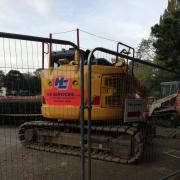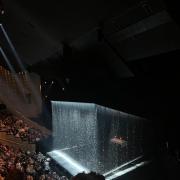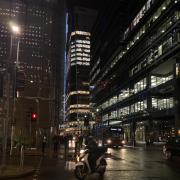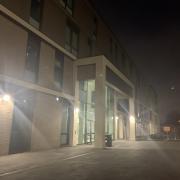
Battersea Power Station and Nine Elms Tube Stations have both been under construction since 2015, and the roundels at Battersea Power Station have been revealed. They are planned to open in Autumn 2021 as part of the Northern Line extension from Kennington. While Wood Lane on both the Hammersmith & City and Circle lines was the last station to open back in 2008, the last tube station to close was Aldwych on the Picadilly Line in 1994, which lasted for 87 years despite continual uselessness. You can still see the station building on Strand Street in good condition, so why hasn’t it been demolished to make way for something useful? Why would you keep a failed station that closed over 25 years ago?
Aldwych was built in 1907 as a branch of the Picadilly Line from Holborn and was also known as Strand Station until Charing Cross stole the name in 1915. It was designed by Leslie Green, and so is similar in design to stations such as Oxford Circus and Covent Garden which earned its status as a Grade II listed building in 2011, although it was built for many more passengers than it would ever take. It had the capacity for 6, lifts, but only 2 were ever installed. Furthermore, one of the two platforms was closed in 1917, meaning Aldwych spent 77 years with just one single platform. In its lifetime, it was subject to numerous plans to connect Aldwych with more stations. An extension of the line to Waterloo was considered in 1919 and 1948 but it fell flat. It was also included in the Fleet Line plans, which became the Jubilee Line. However, whilst tunnels from Charing Cross to Aldwych were started, they stopped short. In the 1990’s, it was decided that the line would go through Westminster and Waterloo to Canary Wharf and Stratford, making Charing Cross and Aldwych Station obsolete in the plans.
At its demise, it was only carrying around 450 daily passengers and losing £150,000 a year. Service to Aldwych Station only ran on peak days from 1962 until its closure in 1994. It was also considered for closure in 1929, 1933 and 1958. There was no justification for spending the necessary £3 million to replace the original lifts from 1907, so Aldwych station officially closed on the 30 September 1994. Aldwych Station may seem deserted and useless at being a tube station, but its failure as a tube line was and is made up by its value in other areas.
Firstly, from 1917 until the end of 1918, German airstrikes meant that around 300 paintings from the nearby National Gallery were stored in the station. War called for Aldwych Station again in 1940, when it was used as an air raid shelter for up to 1500 people a night amidst The Blitz as well as storing thousands of artifacts from the British Museum.
Also, Aldwych Station has been used for filming since it was still operational. V for Vendetta, Sherlock and Darkest Hour all featured scenes filmed at Aldwych Station after it closed, as did Atonement, Fast and Furious 6 and Creep. A scene from Superman IV was also filmed at Aldwych Station in 1986, when the station was still operational. Aldwych has appeared in more than just movies as well; it features in the Tomb Raider III game from 1998 and the music video for The Prodigy’s song Firestarter from 1996.
Currently, the London Transport Museum occasionally run tours of the station, with the next tours starting in April and ending in May. King’s College London also use the office floors above the station as their Classics department. In 2015, the design firm Gensler proposed that the station would become part of their London Underline, a network of disused tube lines that would be converted into pedestrian pathways and cycleways. North of the River Thames, it would link up with Holborn, Charing Cross and Green Park underground. The project would also link Aldwych up with Temple, Embankment and Waterloo by overground walkways, which would not allow cyclists. The point of this project was to ease congestion in London, but also to generate electricity using kinetic paving, which would capture energy from footfall and friction of bicycle tires and turn it into electricity. It even won the award for Best Conceptual Project at the London Planning Awards. However, as with many plans for Aldwych Station, nothing has come of it yet.
Aldwych was a failure of a station. It’s closing in 1994 was arguably long overdue. It was meant to be part of bigger things than a shuttle service on weekdays at peak hours. However, it has shown that something failing at one thing can easily be repurposed into a success, be that as a filming set or a classroom. It also serves as a bit of history left behind for those with a niche interest in public transport and the London Underground.
By Adam Shamsul



























